In this article, we review FiiO’s latest all-in-one unit, the FiiO K9. It retails for $499 USD.
Disclaimer: The FiiO K9 was provided by FiiO for this review, at no cost. As always, the article reflects my unbiased opinion.
FiiO Company
FiiO is one of the most popular, audiophile-oriented companies in the world. Since 2007 they have been designing and manufacturing a wide range of audio products for different price ranges. They have distribution networks all over the world. Today, we will take a closer look at FiiO’s latest addition to their DAC & AMP line-up, the K9. We have reviewed and awarded a lot of FiiO equipment here at Headfonia over the years and you can read those reviews here: Headfonia FiiO Reviews.
FiiO K9 Desktop DAC and Headphone Amplifier with Bluetooth
The K9’s product web page can be found here. It costs $499 USD from FiiO’s official Aliexpress Store. Here’s a list of specifications and highlights of the FiiO’s new king-to-be in the midrange DAC/AMP sphere.
- Dual ESS Technology ES9068AS Premium DACs
- Dual THX AAA 788+ Amp Modules (≈2W @32Ω)
- Dual-Voltage Linear Transformer PSU
- Fully Balanced Architecture
- Isolated Digital & Analog Power
- Dual-Mode Jitter Clocks, 4700uF caps, multiple LDOs
- Latest-gen XMOS XU-308 USB Controller
- Bluetooth + LDAC 24bit/96kHz, APTX/HD, SBC, AAC
- 32bit 768kHz PCM & DSD512 Support
- Upgradeable Firmware + UAC 1.0 & 2.0 Modes for PS5 etc.
A while ago, we took a closer look at the K9 Pro ESS and were quite impressed with its performance. Today, FiiO has introduced a new product called the K9, positioned between the K7 and K9 Pro, and in this article, we are taking a closer look at it. The K9 shares the same chassis as the K9 Pro ESS. Using ESS Technology’s two premium ES9068AS DAC chips, the product is built upon the foundation of the K9 Pro ESS.
In addition, there are differences in the filtering and USB chips used. We will take a detailed look at all of these changes. Currently, FiiO’s K series consists of 4 main desktop all-in-one devices. The latest variants are the K5 Pro ESS, K7 BT, K9, and K9 Pro ESS. You can click on each unit’s name to go to the reviews on Headfonia.com.
FiiO launched the K9 with the following statement:
”The K7 has been so popular since its launch. However, some audiophiles have been waiting for another model with more advanced performance and features, and at a more affordable price than the K9 Pro. This time, a more affordable, yet powerful desktop DAC /AMP is coming for you.”
With that, the K9 is now the flagbearer of the $500 price bracket, and it comes with an identical range of features that we’ve experienced on the K9 Pro ESS. It could be the next budget-y end-game DAC/AMP for many audiophiles, and in this article, we aim to answer that question.
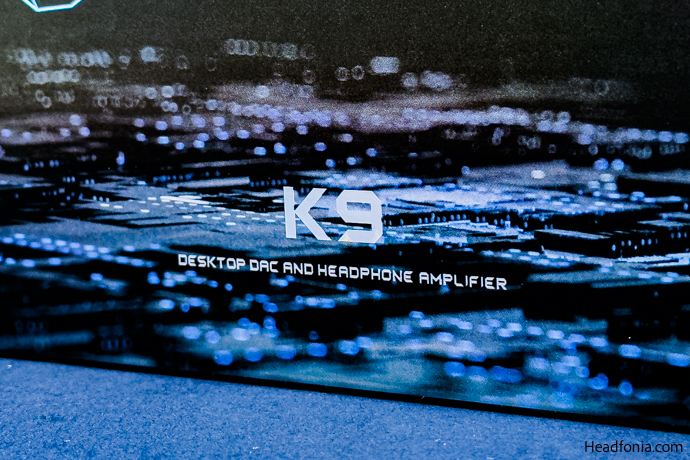
Packaging & Accessories
I think you’re all familiar with the packaging design that FiiO has been using since 2021. The K9 Pro ESS, K7 BT, and K5 Pro ESS all used a similar design. The outer surface of the package is covered with a coating that gives a kind of rainbow effect, and I think this package design fits FiiO’s futuristic approach.
The K9 comes in a rather large flap-open box. The front of the box features an illustration showing the outline of the device. The first thing we see when we open the box is a WARNING leaflet. It states that the product contains a linear power supply and asks you to manually set your local nominal voltage via the switch on the back of the product. I suggest you pay attention here, choosing the wrong voltage type will cause damage to the device.
When we remove the foam protecting the top of the device, we see a large accessory box on the side. We also get our first real idea of the size of the device. It’s not the smallest device among its competitors, but it’s enough considering it’s an all-in-one device that can serve multiple purposes. As for the accessories, the K9 comes with a power cable, a spare fuse, a USB-A to USB-B cable, a Bluetooth antenna, six adhesive rubber feet, a vertical stand, a 6.35mm headphone adapter, and finally a user manual booklet.
My favorite accessory is by far the vertical stand. It’s nice of FiiO to include such a useful tool. The device looks really good in a vertical position, which allows it to work as a headphone stand and take up less space on your desk.
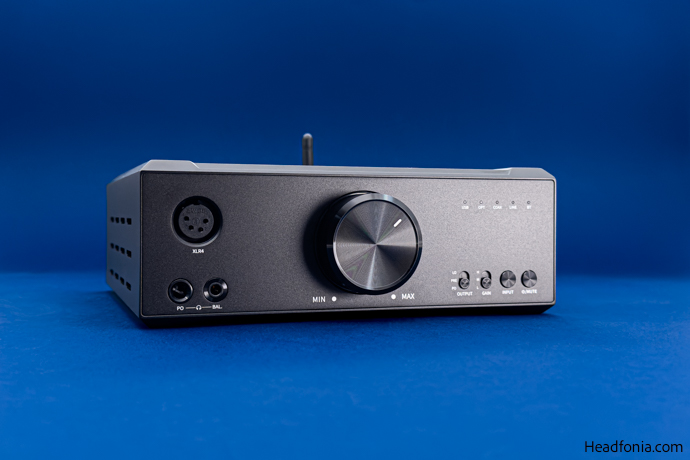
Design & Build Quality
Measuring 20 x 22 x 7 centimeters, the K9 is not a particularly small device. However, since it is an all-in-one device that comes with a vertical stand, I think the size is not going to be an issue here. Plus, if you take a look at the FiiO’s PCB, you’ll see that the FiiO engineers have filled every bit of the available space on the device.
The design elements of the aluminum case are reminiscent of FiiO’s current line of digital audio players but with more elegant, softer design cues. The precision-milled aluminum case with a sandblasted matte black finish is a dangerous combination and could win any enthusiast’s heart. I really liked the design. The size is convenient, and the device has wonderful build quality. I’m glad that they continued the design of the K9 Pro ESS with the K9 also. It looks and feels rigid, durable, and well-built. Small details like the RGB-LED placement under the volume knob, the radiant design buttons, and the matching design of the volume pot enhance the premium feel.
The device layout is quite simple and neat. FiiO has designed a device that looks both stylish and professional. On the front panel, there are the device’s controls, 3.5mm, 4.4mm, XLR 4-pin headphone outs, volume knob, and status LEDs. The device does not come with a remote controller, but thanks to the cleverly designed front panel, it is quite easy to control the device. Additionally, the FiiO Control app which is available both on Android and iPhones helps control the device from afar. More on that later.
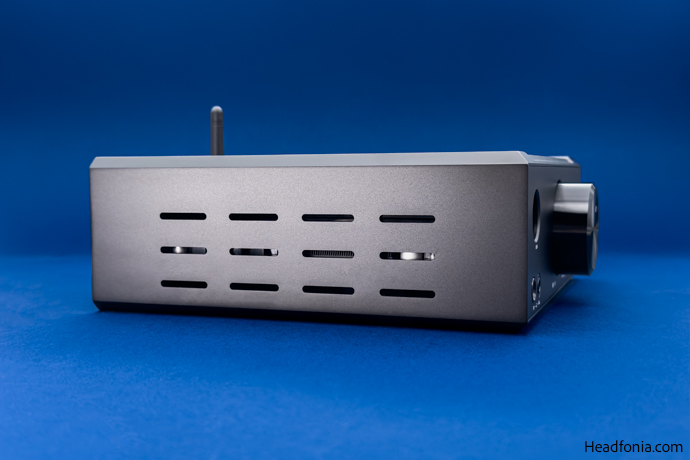
Like most DAC & AMP devices, the main I/O options are located on the back of the device. The K9 offers many different ports for many different usage scenarios. From left to right, we see an IEC C13 power socket, Bluetooth antenna socket, USB-B input, coaxial input, optical input, 4.4mm input, unbalanced RCA inputs, and outputs. The K9 Pro ESS also offers balanced XLR outputs on the far right of the back panel. The I/O options are quite rich and the inclusion of 4.4mm input is rare, especially below the thousand dollars mark.
FiiO did their best to squeeze in as many options as they could into the chassis of their efficient DAC & AMP. The RCAs and the XLR sockets are gold-plated and every I/O on the device feels rigid and high quality. I can’t see any imperfections, milling defects, or assembly issues anywhere on the chassis. We covered every port on the device, except for one. One of the key differences between the K9 and the K9 Pro ESS is that the Pro version comes with a side USB-C port. Unfortunately, the K9 does not feature a USB-C port and if you wish to connect OTG-enabled devices, you’ll need to use USB-A/C to USB-B cable.
In addition, unlike the K9 Pro AKM, the K9 Pro ESS and K9 both come with ventilation holes around the chassis. These vents are vital for cooling the THX amp modules and the transformer within the chassis. Apart from that, the volume pot is sufficient to distinguish each and every version of K9 out there. While the ESS version is equipped with a golden volume pot, the AKM version comes with a black volume pot decorated with a chrome outline whilst the K9 uses an all-black pot with a radiant design cues on its center.
Overall, I can say that the K9 satisfied me in terms of design and build quality.
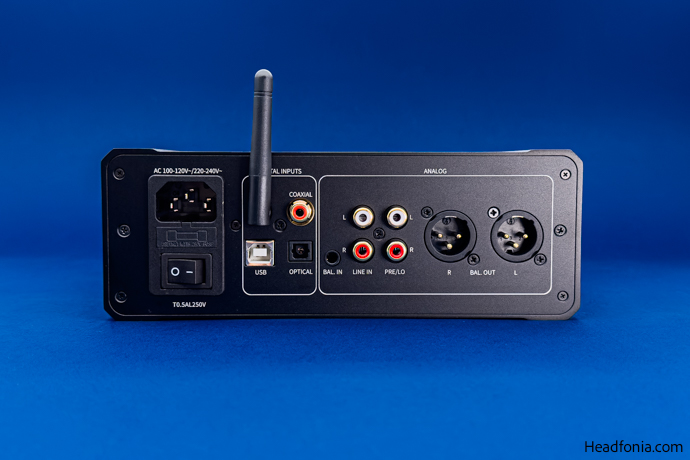
Technology & Audio Circuitry
The K9 utilizes dual ES9068AS DAC chips. Having had the opportunity to test this chipset on various devices, we know that achieving flagship DAC performance is possible with a successful implementation. On the amplifier side, the K9 features two THX AAA 788+ modules, developed in collaboration with THX and FiiO. Much like its bigger brother, the K9 utilizes dual AMP modules and delivers impressive power: 780mW at 300ohm and 2000mW at 32ohm.
It’s worth noting that the K9 incorporates fully balanced circuitry, similar to the K9 Pro ESS, and includes OPA1612 and OPA1602 op-amps. Additionally, the K9 isolates its audio and power stages to minimize noise along the signal path. The supply section uses a linear power supply, complemented by four 4700uF capacitors, mirroring the K9 Pro ESS.
Distinguishing the K9 from the K9 Pro ESS are several key elements: it features a slightly different PSU, employs dual 9068AS DAC chips as opposed to dual 9038PRO, includes a newer USB controller (XUF308 instead of XUF208), and lacks official MQA support. Moreover, the K9 is 40 grams lighter, has a similar but slightly modified aesthetic, and lacks a side USB-C OTG port. Priced about $350 USD cheaper than the K9 Pro ESS, the K9 stands as a compelling alternative. Initially, I expected it to launch at around $650, so discovering such a technically impressive all-in-one unit at $500 was a pleasant surprise. Once again, the FiiO team has outdone themselves.
Controls & Operation
This paragraph is shared between the units as the K9 features identical controls as the K9 Pro ESS. As you know, the K9 does not have a screen, frankly, since I like its design very much, I did not look for a screen in my 2 months of use. The entire interface of the K9 consists of LEDs, buttons, and switches on the front panel. The 5 status LEDs on the upper right of the front panel indicate the active input of the device. There is also an integrated RGB LED around the volume knob.
It is color-coded and it provides various info, including power status, pairing status, and active sample rate or file type during playback. There are two switches and two buttons at the bottom right of the front panel. From left to right, there is an output selector, a gain selector, an input selection button, and lastly, a button that doubles as a power and mute button. Long pressing turns the device off whilst pushing it once mutes all sound.
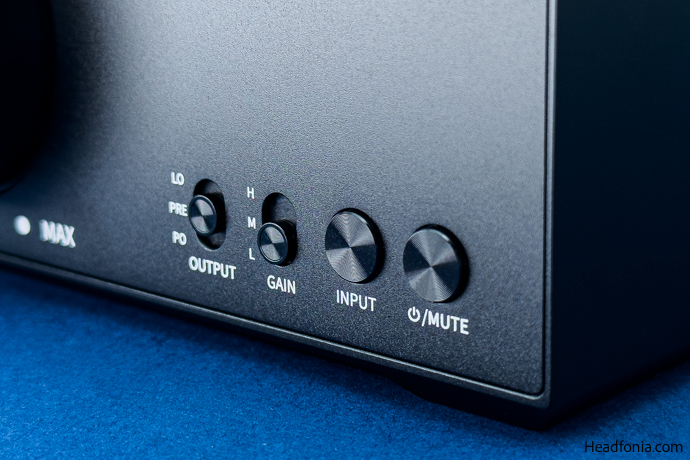
Controlling the device is quite straightforward. Button positioning is easy to remember and it takes less than 10 minutes to get to know the controls of the device. Since the K9 is an all-in-one device, it is possible to use the device in many different ways. The device has dedicated DAC, PRE, and PO modes. In other words, Dual dacs can feed your active monitors, or your power amplifier, directly.
While the DAC mode is volume-fixed, the PRE mode is volume-variable. Lastly, the PO mode activates the headphone outputs on the front. Since the device features a fully balanced architecture, it will be beneficial to use the balanced outputs if you have proper terminations. Additionally, since the output impedance of the device is quite low, it is perfectly suitable for multi-driver low-impedance IEMs. It has to be said that FiiO has designed the device to be used as a jack-of-all-trades in all kinds of setups and they have done a very good job.
You can control the K9 via the FiiO Control app which is available both on iOS and Android platforms. The app offers plenty of options. Let’s take a closer look.
There are many settings available and I will try to mention them all in this paragraph. In the app, you can change the volume knob’s status indicator pattern, change the Bluetooth codec priority, or assign an individual codec, such as LDAC as the only active codec. You can also select a new input source via the app. There is also an integrated 10-band EQ within the app, however, it only affects the BL input as of now. This may change in the future with FW updates.
Apart from those, we have a few system controls within the app as well. We have the ability to clear the pairing list and upgrade the firmware of the device both using local files and OTA. We can also restore to the factory default settings via the app if we encounter any issues during operation. As for the audio settings, we have a channel balance bar and 3 DAC filters to choose from.
In this last paragraph, let’s go over the wired and wireless decoding capabilities of the K9 Pro ESS. The unit features the latest generation XMOS XU308 USB controller. It can decode PCM up to 32bit-768kHz and DSD up to DSD512, natively, via USB, thanks to the new controller. The K9 uses a superior chip compared to the K9 Pro ESS which uses XU208. As for Bluetooth, the unit is equipped with the same, premium-tier Bluetooth 5.1 chipset from Qualcomm, the trusty QCC5124. The K9 Pro supports AAC, SBC, AptX LL, AptX HD & LDAC codecs. The LDAC works well, even when we force-feed it with a constant 990kbps (max) of data through the developer options Android platform.
The article continues with the part on sound on the next page. Click here or use the buttons below.
Page 1: FiiO, K9, Packaging & Accessories, Design & Build Quality, Technology & Audio Circuitry, Controls & Operation
Page 2: DAC Performance, DAC & AMP Performance, Wireless Performance, Comparisons, Last Words






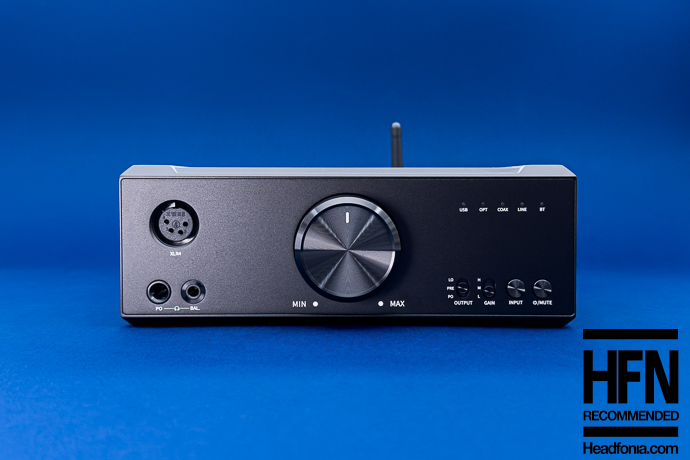

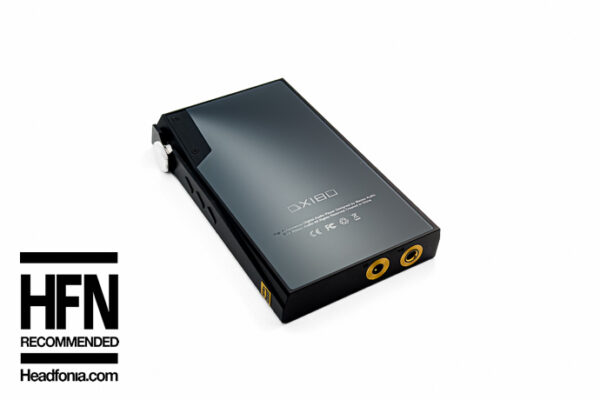
Rivelino Lira de Oliveira
The K9 linear power supply is much superior to the K7 simple power supply, the K9 power supply stands out for its good performance, but when asked if the K7 + PSU PL50 always says that the performance is little or almost nothing better that I use it with a common source, it is very strange, since a good source participates in the good sound dynamics of any device, waiting for Fiio to return with the PL50 stocks that have been out of stock for several months in the 120v version
Als8
Who is better to choose: SMSL DO400, Fiio K9 or Topping DX5?